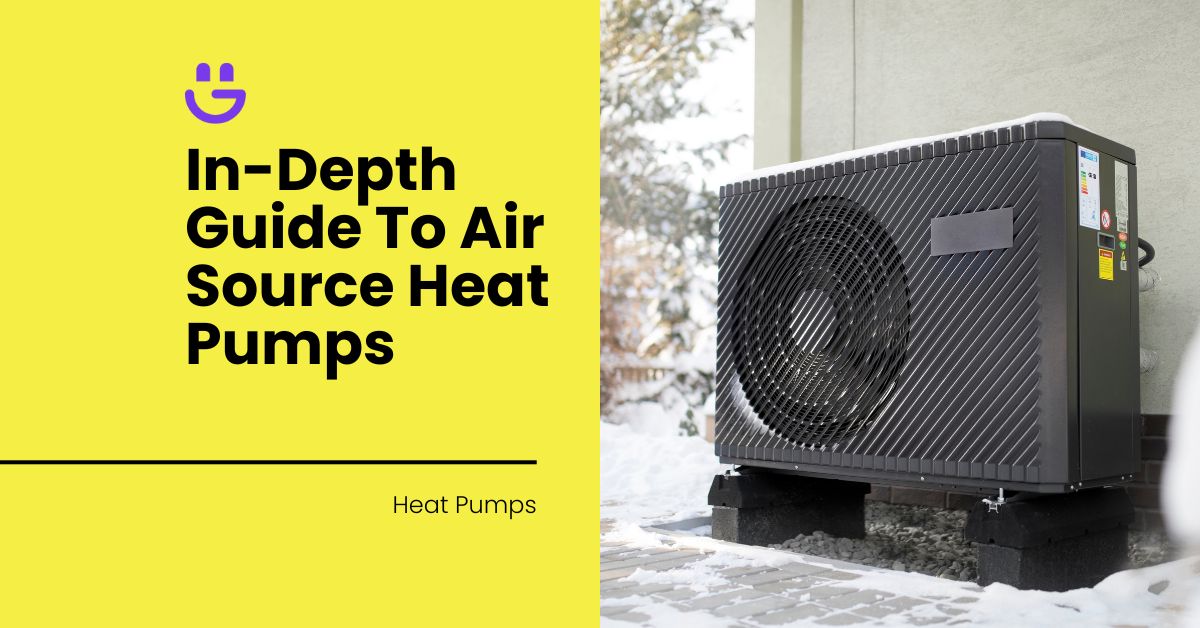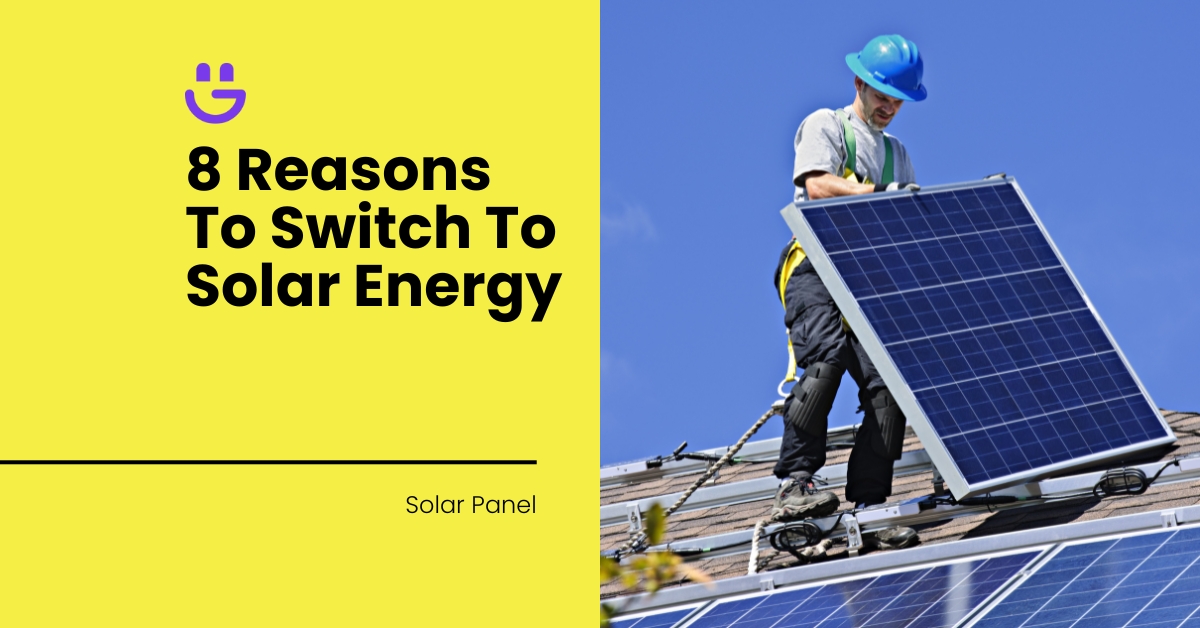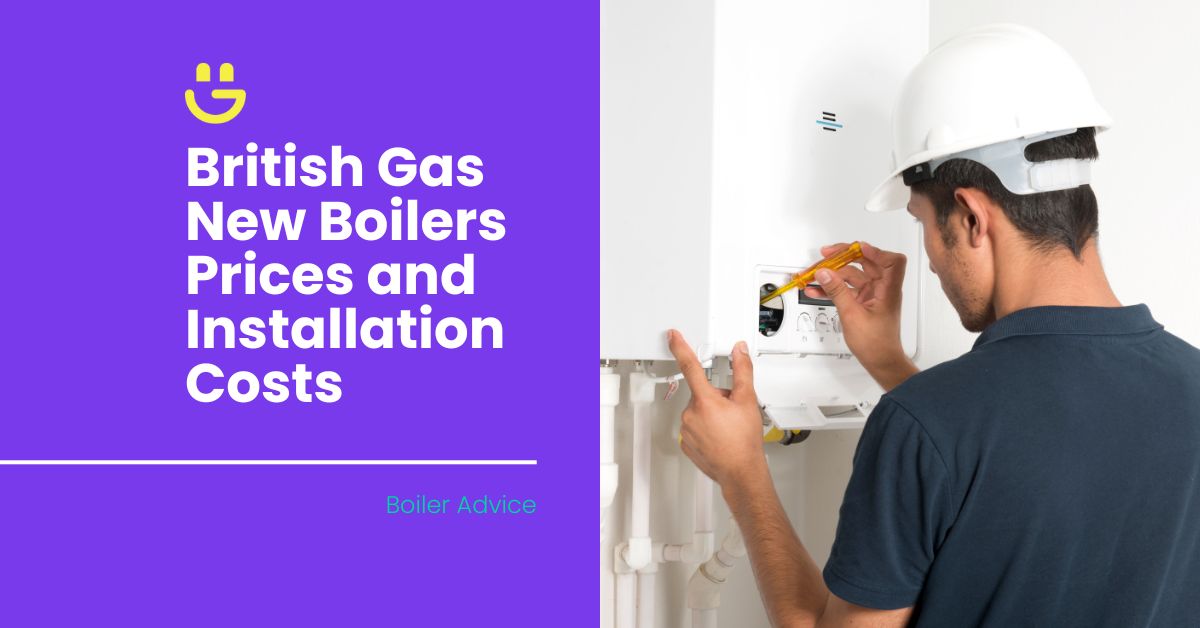Last Updated on November 14, 2025
Ready to heat things up sustainably? Say hello to eco-friendly comfort with the revolutionary technology of air source heat pumps (ASHPs)!
This guide will walk you through the world of ASHPs – where innovation meets efficiency. Air source heat pumps reinvented the way we heat and cool our homes. In this article we’ll unravel the inner workings behind this heating sensation – it’s time to discover why ASHPs are the hottest trend in sustainable living.
Contents
What Are Air Source Heat Pumps?
An air source heat pump is a system that transfers heat from a cold area to a warmer one through a reverse refrigeration process. An air source heat pump system is a kind of heat pump that uses thermal energy from outside air, while other types use water and ground sources.
How Do Air Source Heat Pumps Work?
Air source heat pumps are low-carbon devices that harness surrounding outside heat to warm indoor spaces or provide hot water. These systems go through a series of carefully orchestrated steps, streamlined by the components of the pump unit.
ASHP components
Coil and refrigerant
The system begins by absorbing heat from the outside air using an evaporator coil. This coil contains the liquid refrigerant, which evaporates as it absorbs heat energy from the surroundings. A liquid refrigerant is a specialised fluid with a low boiling point that makes the heat transfer process happen.
Compressor
The evaporated refrigerant travels to an air pump compressor where it undergoes compression. This process elevates the refrigerant temperature and pressure to concentrate the captured heat. It turns into a gas, ready for the next stage.
Condenser coil
Next, the concentrated refrigerant gas passes to the condenser coil, which is a heat exchanger located inside the house. Here, the heat is released into your indoor space or stored water supply. The refrigerant then condenses back into a liquid state. The liquid returns to the outdoor coil to repeat the cycle, ensuring a continuous and efficient heating process.
Air ducts and water pipes
An air source heat pump needs either air ducts or water pipes to distribute generated heat evenly. Which method they use depends on the type of heat pump system.
Air-to-air systems circulate heated air through ducts to warm indoor spaces. Air-to-water heat pumps transfer heat using a water pipe system.
Types of air source heat pumps
Air source heat pumps come in two designs that suit different heating demands: air-to-water heat pumps and air-to-air heat pumps. These are either set up in a monoblock or split system. Each option offers distinct advantages and capabilities.
Air-to-water heat pumps
Air-to-water heat pumps are designed to extract heat from the outside air and transfer it to a wet central heating system (or water-based heating system). This setup is commonly used to provide heat to radiators and underfloor heating systems.
By circulating heated water through the central heating system, air-to-water heat pumps offer consistent, comfortable indoor temperatures. These systems can also provide hot water for domestic use.
Air-to-air heat pumps
Air-to-air heat pumps come equipped with indoor fan coils. These systems absorb heat and distribute it throughout the building via air ducts. Air-to-air heat pumps are suitable if you don’t have a central heating system or if you’re seeking support for an existing heating solution.
This type of air source heat pump provides cooling capabilities too, making them ideal for year-round comfort. Air-to-air heat pumps are relatively simple to install and require less space than air-to-water systems. They also tend to be more affordable, making them a more popular choice for residential uses.
Monoblock systems
A monoblock air source heat pump combines all major components into a single outdoor unit. This simplifies installation and maintenance and requires less outdoor space.
Monoblocks require ductwork for air distribution, making them more suitable for air-to-air systems. As mentioned, air-to-air pumps also need ducts, although they are not exclusively limited to air-to-air setups.
Split systems
Split air source heat pump systems consist of separate indoor and outdoor units. The outdoor unit contains the compressor and condenser while the indoor unit houses the expansion valve and evaporator.
Split systems provide flexibility in installation and they also reduce noise concerns. This setup is often preferred for air-to-water systems.
Air Source Heat Pump: Advantages And Disadvantages
If you’re looking at an air source heat pump installation, you will want to take a closer look at the pros and cons. Generally, the advantages outweigh the disadvantages, but you might need to overcome some hurdles.
Advantages
There are plenty of good things to say about an air source heat pump. They stand out as one of the top renewable energy systems.
Energy efficiency
Air source heat pumps are masters at efficient heating – capable of producing more energy than they consume. ASHPs can achieve up to a Coefficient of Performance (COP) of 2 to 4, meaning they produce 2 to 4 units of heat for every unit of electricity consumed. This high efficiency is because most of the generated heat comes from the ambient air – a free and renewable energy source.
Environmentally friendly
Air source heat pumps produce fewer greenhouse gas emissions than fossil fuel heating systems. By using renewable energy, ASHPs reduce the need for non-renewable resources. Thus, they contribute to a greener environment and reduce your carbon footprint.
Versatility
One of the significant advantages of air source heat pumps is their ability to provide both heating and cooling. This means they can be helpful for year-round temperature control.
ASHPs can combine with existing heating systems, such as radiators, underfloor heating, and hot water systems.
Long-term savings
While the initial investment in an air source heat pump may be higher compared to conventional heating systems, the long-term savings can outweigh this cost. ASHPs have lower energy consumption and less maintenance requirements. Depending on your current heating system and needs, those factors can offer decent savings over the system’s lifespan.
Low maintenance
Traditional heating systems, like gas boilers, often need regular servicing and upkeep, while air source heat pumps are low maintenance. This not only saves time and hassle but also contributes to long-term cost savings.
Disadvantages
The downsides of ASHPs can be significant, but the pros generally outshine the cons.
Initial cost
One of the main challenges to air source heat pumps is their initial expense. The upfront cost for buying and setting up an ASHP easily exceeds that of conventional heating and cooling systems. However, it helps to think about the overall savings and environmental impact when assessing whether an air source heat pump is the best option.
Noise Levels
Many people ask: “Are heat pumps noisy?”. Unfortunately, this is true in the case of the air source heat pump. ASHPs operate between 40 decibels and 60 decibels – as loud as an air conditioning unit. This noise level may be a big problem if you’re someone who values a comfortable silence.
Space requirement
Another drawback of heat pumps is the space required for installation. ASHP systems consist of both indoor and outdoor parts. The outdoor unit often takes up a considerable amount of space in the yard or on your outside wall. This can be a limitation if you live somewhere where space is scarce – like an apartment.
Climate dependency
The efficiency of an air source heat pump can be affected by climate and weather conditions. In colder climates, ASHPs may struggle to extract heat due to outdoor air having less heat. They usually still work well enough for your needs. However, you might need to insulate your home better for when your heat pump doesn’t function optimally.
Air Source Heat Pump Considerations
When considering whether an air source heat pump is right for your home, numerous factors come into play. You’ll need to think of your specific needs, the costs involved, and preparing your home for installation.
Your needs
Your unique needs influence what type of ASHP system you need and the overall costs. For example, you might want to use both a heat pump and a gas furnace. In this case, you’ll need a hybrid heating system. A hybrid system will require less energy compared to relying solely on one heating source. Therefore, you would get by with a smaller unit.
Assessing your needs will help determine the appropriate size and type of air source heat pump to meet your household’s demands.
So, to cover all the bases, you will need to look at the following:
- Your heating/cooling requirements
- The size of your property
- Insulation levels
- Your existing heating system and hot water usage
Air source heat pump for underfloor heating
Air source heat pumps can definitely complement existing underfloor heating, especially a water-based ASHP system. This system type has a large surface area for heat absorption and the ability to accommodate lower temperatures. This makes them ideal if you’re looking to achieve maximum energy efficiency.
However, if you don’t have underfloor heating already, an air source heat pump for this purpose will take a lot more planning. Installing underfloor heating in existing homes is complex. It typically only suits ground floors because of construction difficulties.
Heat pumps for water heating
Air source heat pumps can provide hot water, albeit not instantly, like traditional boilers. This ability is a superb addition to space heating as it offers dual purposes. By harnessing renewable energy from outside air, ASHPs can heat water for baths, showers, and all other domestic hot water needs.
The catch is that you’ll need a hot water cylinder to store water to enjoy continuous steamy showers. Adding ASHP water heating reduces your dependence on fossil fuel boiler systems and may help minimise utility expenses.
Costs
ASHPs are notorious for their installation costs. The initial cost of an air source heat pump typically ranges from £3,500 to £8,900 – but can reach £15,000. It all depends on factors such as the unit’s power, brand, and installation difficulty.
Government grants
Fortunately, government grants are available in both England and Scotland that significantly reduce the upfront investment. In England, you can benefit from a £7,500 subsidy through the Boiler Upgrade Scheme. A similar grant is available through Home Energy Scotland, where you have the option of an interest-free loan of up to £7,500 to cover ASHP installation costs.
What are the running costs of an ASHP heating system?
The UK government encourages switching from fossil fuel boilers to cleaner, more sustainable heating options. Air source heat pumps are often the go-to. Understanding the costs and savings associated with the swap has become extremely relevant.
Generally, the yearly expenses for operating an air source heat pump vary from £685 to £1,550. In extreme cases, you can expect a large 18,000 kWh ASHP to cost around £1,990 annually. However, it’s essential to note that your running costs depend on home size, insulation quality, energy usage patterns, and electricity prices.
To estimate your running costs accurately, divide your heating needs by the heat pump’s presumed efficiency, then multiply it by the electricity price.
How much money can a heat pump save on heating bills?
With the UK government offering grants to support the installation of ASHPs and other low-carbon heating systems, you have an opportunity to reduce carbon emissions while potentially saving on energy bills.
Although ASHPs may lead to savings for those replacing inefficient boilers, households with gas boilers may not see significant financial benefits due to higher electricity costs. For example, a 10kW heat pump costs around £935 per year to run in a typical UK home, whereas a gas boiler amounts to around £853.
Although these heat pumps run on electricity, they’re more energy efficient than traditional boilers, reaching 300-400% efficiency. Running costs depend on insulation quality; a well-insulated home requires a smaller pump, which entails less expenses.
Installation
Besides the installation costs, the actual installation itself is quite a job. It involves a variety of requirements to ensure efficient functionality.
Factors such as outdoor placement, airflow, climate, power supply standards, noise mitigation, clearance space, and structural support for the unit are important considerations.
Monobloc and split systems have specific installation needs that require enough space and compatibility with your existing heating setup. The chosen option must also align with the specific heat pump type (air-to-air or air-to-water).
As you probably noticed, installation requires a comprehensive understanding to fulfil your needs. This complex task is one of the reasons installation is so expensive.
Upgrading radiators for air source heat pumps
ASHPs generate heat at lower temperatures than oil or gas boilers. This means they need larger radiators to distribute heat throughout your home effectively.
Your heating engineer will conduct a thorough assessment of your home. They will account for factors like insulation levels, room sizes, and heat loss calculations. This will help them to determine the best size and quantity of radiators needed to heat your space.
How can I prepare my home for an ASHP?
When considering transitioning to an air source heat pump, you will likely have a few questions. Here’s a rundown of top considerations to prepare your home:
- Replacing your gas boiler: While ASHPs can replace gas boilers, a hybrid system might also be suitable, combining both technologies for optimal efficiency.
- Preparing your home: Enhance energy efficiency through insulation upgrades.
- Choosing installation locations: ASHP units are typically installed outdoors in sheltered areas, avoiding noise disturbances and ensuring sufficient space for servicing.
- Compatibility with existing radiators: ASHPs can work with existing radiators but at lower flow temperatures (ie: you might need larger ones).
- Selecting an installer: Ensure your installer is MCS accredited for quality assurance and grant eligibility. F-Gas certification is necessary for split system installations.
- Planning permission: In most cases, ASHP installations do not require planning permission, but it’s wise to verify this with your local authorities.
Efficiency
One thing to note is that outdoor temperature can significantly impact ASHP efficiency. While they excel in moderate climates, colder temperatures can reduce efficiency, requiring more energy input for the same heat output.
When seeking the most efficient option, the Coefficient of Performance (COP) or Energy Efficiency Ratio (EER) will quantify efficiency. A COP of 3 indicates 300% efficiency, which is well ahead of a boiler.
Maintenance
ASHPs are complex systems due to their internal and external components. While they generally only require minimal upkeep, an annual servicing by a qualified professional will do the trick. We also recommend seasonal cleaning.
The main maintenance tasks:
- Checking functionality, settings, and refrigerant levels.
- Inspecting the external unit, including anti-vibration mounts and coils, for any issues.
- Cleaning the outdoor unit to remove dirt and debris, especially from coils.
- Examining motors for wear and lubricating them as needed.
- Inspecting electrical connections.
- Checking and maintaining indoor components like tanks, radiators, and filters.
FAQs
Are air source heat pumps worth it in the UK?
Yes, air source heat pumps (ASHPs) are worth considering in the UK, especially during renovations or when replacing old boilers. They offer energy efficiency, cost savings, and contribute to sustainability goals by minimising your carbon footprint.
Do air source heat pumps work in cold weather?
Yes, air source heat pumps (ASHPs) work in cold weather, though their performance may vary. An ASHP’s performance depends on the system’s design and the specific climate conditions. They are less efficient in colder temperatures.
However, modern models often come equipped with defrosting features and can extract heat even from cold air, making them well-suited for maintaining indoor comfort during winter months.
Do air source heat pumps use a lot of electricity?
Compared to electric boilers and hot water systems, air source heat pumps generally use less electricity. The actual electricity consumption may differ based on the specific system and your home’s heating characteristics.
However, ASHPs are more energy efficient as they transfer heat from the outside air rather than generating heat directly, making them cost-effective and eco-friendly heating solutions.
Is a heat pump cheaper than a gas boiler?
Heat pumps typically provide savings in the long run because they are more efficient and use renewable energy, but initial expenses are often considerable. Compared to gas boilers, the cost-efficiency of heat pumps relies on different aspects, such as setup and efficiency. Your location and insulation quality also influence how cost-effective they are.
Can an air source heat pump heat a whole house?
An air source heat pump can easily heat a whole house by taking heat from the outdoor air and bringing it inside. With the right size, insulation, and distribution systems in place, it’s a great energy-efficient choice for keeping every room warm.
Final Thoughts
While there is a copious amount of information on air source heat pumps, the key things to note are their remarkable efficiency, versatility, and long-term benefits.
However, it’s essential to consider factors like installation costs, noise levels, and climate dependency when making the switch. Request a free air source heat pump quote from Eco Happy today.






Tom Allen
Solar Expert